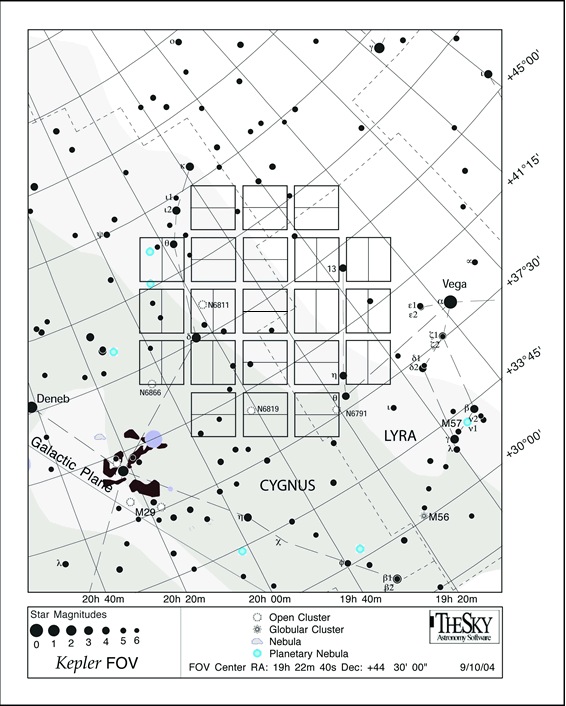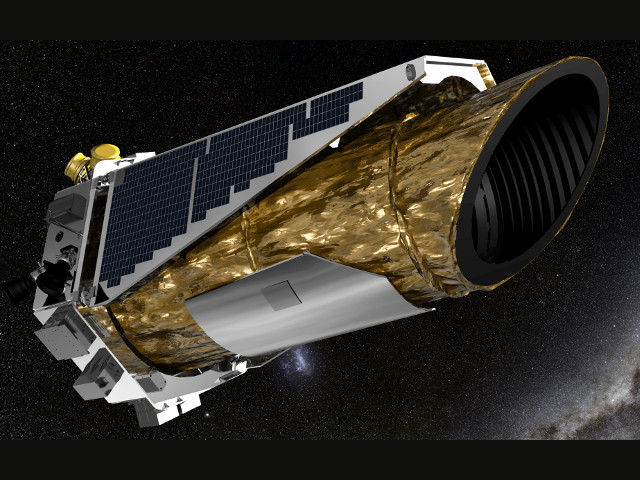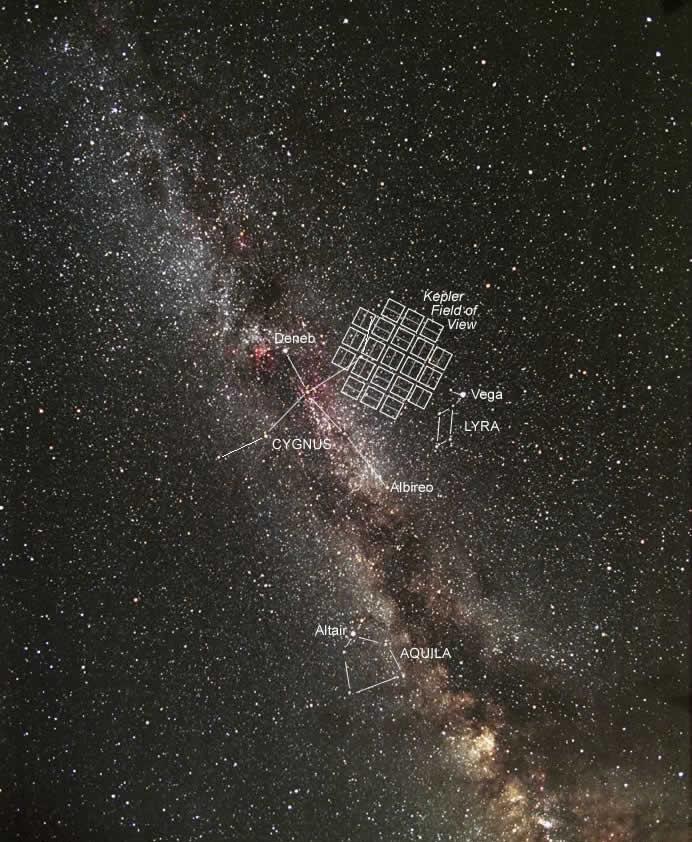Mission Overview
Map of Observations

Wavelength Coverage

NOTE: The K2 mission is a follow-on to the Kepler mission, operated when the telescope was reduced to two reaction wheels.
The Kepler spacecraft was launched into an earth trailing orbit and stared at a 100 sq. degree patch of sky near Cygnus in order to measure the brightness variations of about 200,000 stars. Its primary mission was to find exoplanets transiting these stars and to determine the prevalence of exoplanets in the Galaxy. The Kepler spacecraft rotated by 90 degrees every 90 days in order to keep the solar panels pointing at the sun and thus the Kepler data is divided into 90-day quarters. Kepler only downloaded the pixels surrounding selected stars of interest at either a 30-minute or 1-minute cadence. The mission produced a flux time series for each star and searched these light curves for the presence of a transiting exoplanet. In addition to discovering exoplanets, Kepler data has been used to study the variability of stars and eclipsing binaries.
Active From
Launch: March 6, 2009
Observing: May 2, 2009 - May 11, 2013
Resolution
4 arcseconds / pixel
Capabilities
- Time Series
- Photometry
- Imaging
Documentation
All Documents
July 16, 2020
MAST Kepler Archive Manual
The archive manual describes the file formats and their contents for the light curve files, target pixel files, full frame images, and other engineering files.
1 MBSearch Tools
All Search Options-
MAST Portal

Download light curves and target pixel files for a few targets. Download full frame images. Find data from other missions for your target.
-
exo.MAST

Find MAST data (including Kepler) for known planets or KOI's, matched to orbital phase. Plot quarter-stitched DV light curves. Access exoplanet parameters with references.
-
MAST Astroquery

Search for, and retrieve, Kepler data products programmatically based on a list of coordinates or target names. Interact with observational data in programs you write.
-
Kepler Data Search & Retrieval

Kepler-specific target pixel and light curve search. Query on target or observational metadata.
-
Bulk Downloads

Download scripts to retrieve complete sets of Kepler data, such as light curves, target pixel files, full frame images, or engineering files.
-
Mission Related Software
This table is a curated list of software commonly used by the science community during the Kepler and K2 missions.
-
Amazon Web Services
The Kepler mission observed the brightness of more than 180,000 stars near the Cygnus constellation at a 30 minute cadence for 4 years in order to find transiting exoplanets, study variable stars, and find eclipsing binaries.







